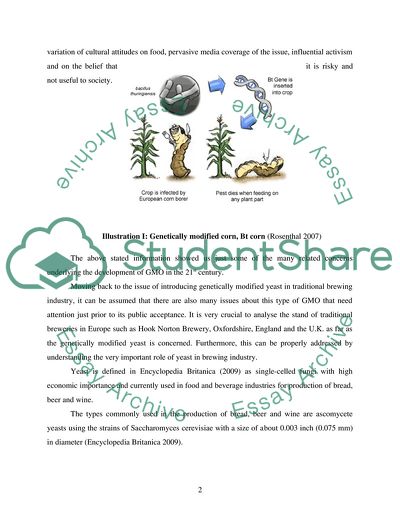Cite this document
(The use of GM Yeast in the brewing industry. Especially in the Coursework, n.d.)
The use of GM Yeast in the brewing industry. Especially in the Coursework. https://studentshare.org/technology/1723140-the-use-of-gm-yeast-in-the-brewing-industry-especially-in-the-traditional-brewing-sector-and-the-implications-of-the-switch-to-more-modern-technology
The use of GM Yeast in the brewing industry. Especially in the Coursework. https://studentshare.org/technology/1723140-the-use-of-gm-yeast-in-the-brewing-industry-especially-in-the-traditional-brewing-sector-and-the-implications-of-the-switch-to-more-modern-technology
(The Use of GM Yeast in the Brewing Industry. Especially in the Coursework)
The Use of GM Yeast in the Brewing Industry. Especially in the Coursework. https://studentshare.org/technology/1723140-the-use-of-gm-yeast-in-the-brewing-industry-especially-in-the-traditional-brewing-sector-and-the-implications-of-the-switch-to-more-modern-technology.
The Use of GM Yeast in the Brewing Industry. Especially in the Coursework. https://studentshare.org/technology/1723140-the-use-of-gm-yeast-in-the-brewing-industry-especially-in-the-traditional-brewing-sector-and-the-implications-of-the-switch-to-more-modern-technology.
“The Use of GM Yeast in the Brewing Industry. Especially in the Coursework”. https://studentshare.org/technology/1723140-the-use-of-gm-yeast-in-the-brewing-industry-especially-in-the-traditional-brewing-sector-and-the-implications-of-the-switch-to-more-modern-technology.


